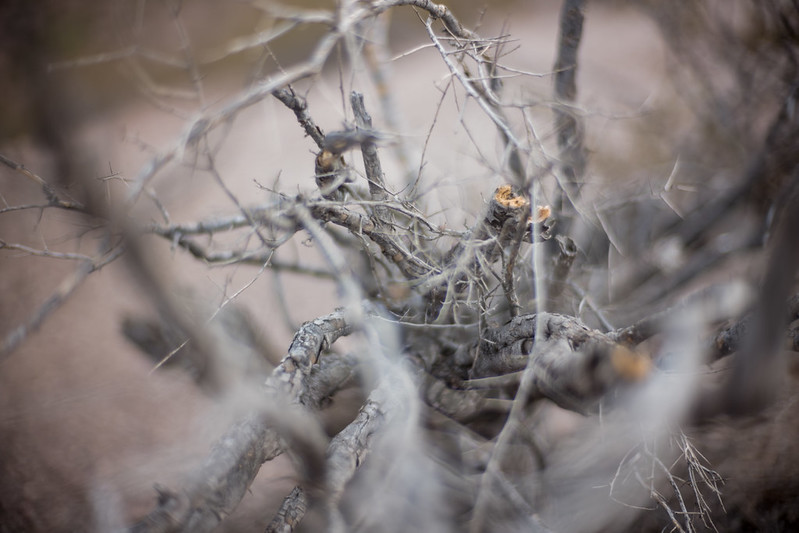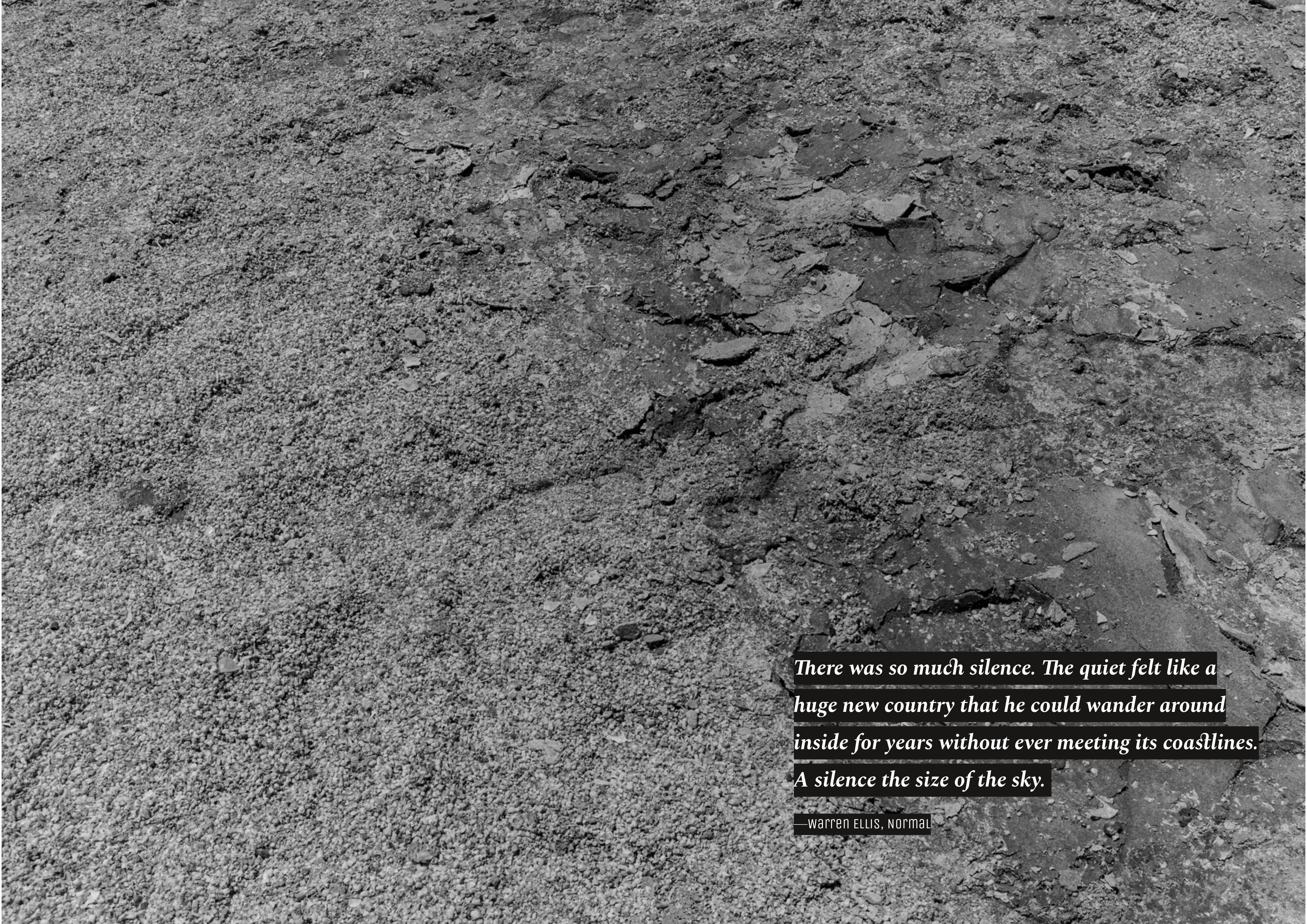Ways of Listening
By Ron Broglio
There are sounds all around us, but often we are only aware of them when we direct our attention to listening. As humans, we primarily orient ourselves by vision. So, it takes some careful noticing to realign our relationship to the landscape by sound. Once you experience these modes of listening, you can try them anywhere and at any time.
Duration: 4 minutes to hours.

So often the first time one did things they were contingent, accidental, and not necessarily good things on which to base a set of habits. There was some searching to be done, in other words, some testing of different possibilities. (…) That was the interregnum, in fact, the naked moment before the next exfoliation of habits, the time when one wandered doing things randomly. (…) The time without skin, the raw data, the being-in-the-world. Kim Stanley Robinson, 2312
Preparation: This exercise can be done anywhere. For desert attunement, try a relatively secluded place. Spend at least one minute with each form of listening.
There are three primary modes of listening. In which you can focus attention on different parts of the soundfield of a place:
Passive – Listen to everything without focus. Directed – Listen to one sound and focus in on every tiny detail. Active – listen to the relationships between sounds, how they interact. This is called the “acoustic ecology” of the place. There is also a fourth kind of listening you can try:
Full Body listening – This is a deep listening to all the sounds as a whole field. It is not active or directed listening. Instead quiet the mind and body and listen without thinking about the sounds. Let the sounds pass over you and through you. Try to listen without judging the sound as good or bad or high pitch or low. Like waves on a shore, let the sound environment wash over you. Sound artist Garth Paine coined the term “somaphony” for this type of listening. “Soma” comes from the Greek word for body which he fused with the word “symphony” coming from the Greek word meaning harmony. The body is in harmony with the sounds in the environment.

Nacirema culture is characterised by a highly developed market economy which has evolved in a rich natural habitat. While much of the people's time is devoted to economic pursuits, a large part of the fruits of these labor and a considerable portion of the day are spent in ritual activity. The focus of this activity is the human body, the appearance and health of which loom as a dominant concern in the ethos of the people. While such a concern is certainly not unusual, its ceremonial aspects and associated philosophy are unique. Horace Miner, The Body Rituals Among the Nacirema
Reflections: What did you hear? What changed in the soundfield for you as you changed methods of listening? As a creative and fun exercise, try drawing what sounds sound like.
Further Information: You can also listen to the Southwest deserts at http://www.ecolisten.org/sonic_events.php For more details about field research, field recordings (using ambisonic recording technology) and other forms of data collection, see the Listen(n) Project http://acousticecologylab.org.
Dust and Shadow Reader Vol. 1. Previous: awareness exercise. Next: objects and cairns.
References: bibliography

